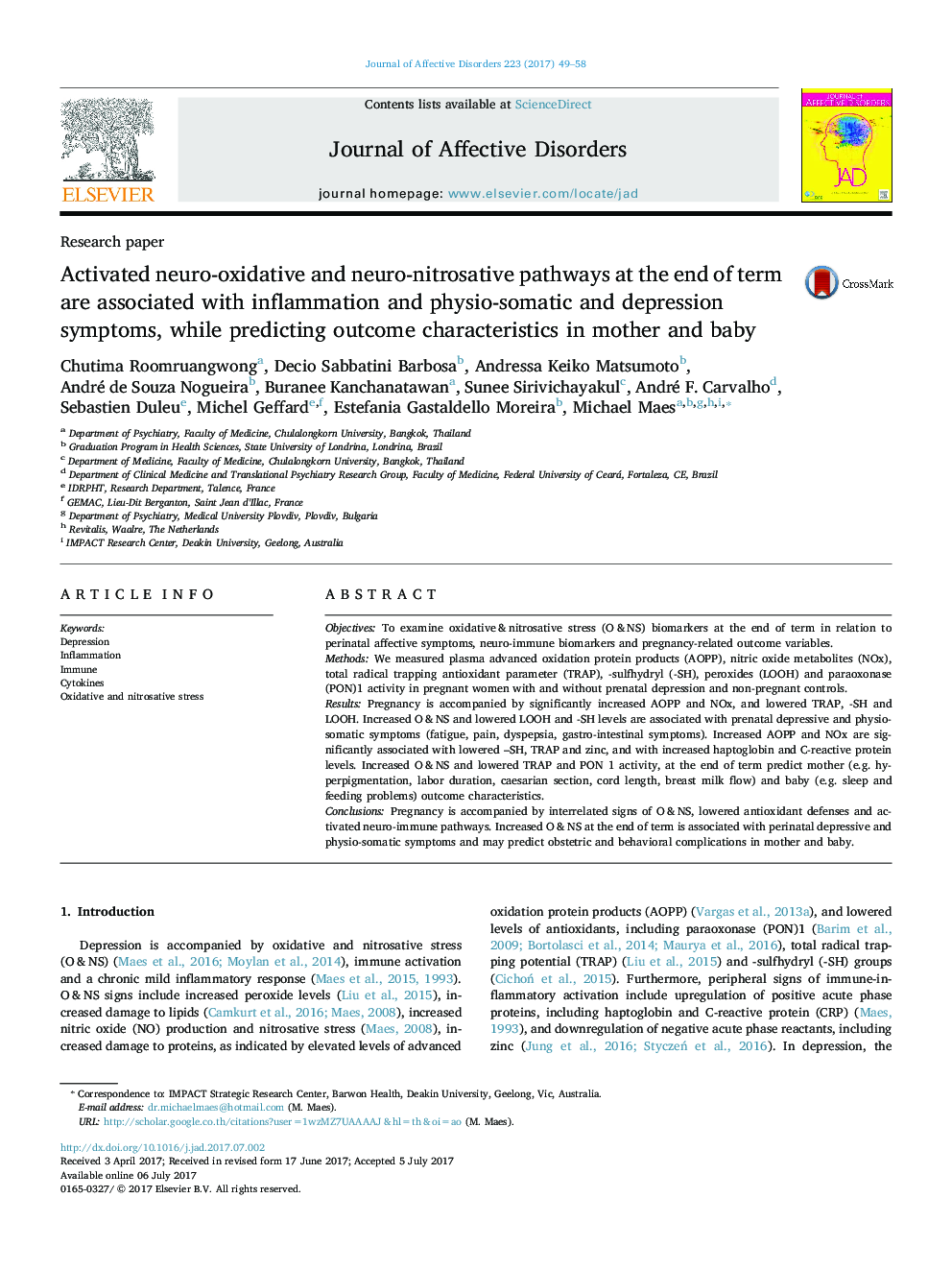| Article ID | Journal | Published Year | Pages | File Type |
|---|---|---|---|---|
| 5721791 | Journal of Affective Disorders | 2017 | 10 Pages |
â¢Pregnancy is accompanied by activated nitro-oxidative pathways.â¢Prenatal inflammation is accompanied by activated nitro-oxidative pathways.â¢Nitro-oxidative stress is accompanied by prenatal depression symptoms.â¢Nitro-oxidative stress is associated with physio-somatic symptoms at the end of term.â¢Prenatal nitro-oxidative stress predict mother and baby outcome characteristics.
ObjectivesTo examine oxidative & nitrosative stress (O&NS) biomarkers at the end of term in relation to perinatal affective symptoms, neuro-immune biomarkers and pregnancy-related outcome variables.MethodsWe measured plasma advanced oxidation protein products (AOPP), nitric oxide metabolites (NOx), total radical trapping antioxidant parameter (TRAP), -sulfhydryl (-SH), peroxides (LOOH) and paraoxonase (PON)1 activity in pregnant women with and without prenatal depression and non-pregnant controls.ResultsPregnancy is accompanied by significantly increased AOPP and NOx, and lowered TRAP, -SH and LOOH. Increased O&NS and lowered LOOH and -SH levels are associated with prenatal depressive and physio-somatic symptoms (fatigue, pain, dyspepsia, gastro-intestinal symptoms). Increased AOPP and NOx are significantly associated with lowered -SH, TRAP and zinc, and with increased haptoglobin and C-reactive protein levels. Increased O&NS and lowered TRAP and PON 1 activity, at the end of term predict mother (e.g. hyperpigmentation, labor duration, caesarian section, cord length, breast milk flow) and baby (e.g. sleep and feeding problems) outcome characteristics.ConclusionsPregnancy is accompanied by interrelated signs of O&NS, lowered antioxidant defenses and activated neuro-immune pathways. Increased O&NS at the end of term is associated with perinatal depressive and physio-somatic symptoms and may predict obstetric and behavioral complications in mother and baby.
